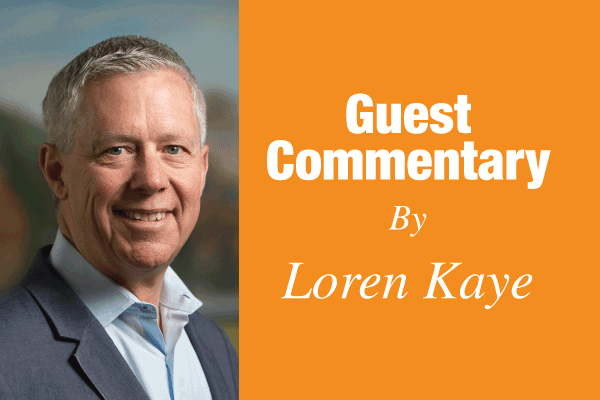
The Legislative Analyst has cried “last call” for the state budget bash.
Even as the State Legislature enjoys the prospect of spending record budget surpluses, its top fiscal adviser has warned of severe budget problems ahead — no matter if the economy overperforms or slides into recession.
What’s more, raising taxes won’t solve these problems.
Constitutional Mandates
The challenge facing state leaders is how to comply with three constitutional mandates that direct how the Legislature prioritizes spending, and how or whether it can spend surplus revenues:
• Since 1979, the constitution requires revenues in excess of a spending limit be returned to taxpayers. In 1990 the mandate was changed to split excess revenues between taxpayers and schools. This limit, which increases annually by inflation plus population, has only come into play once in the intervening 43 years, in 1986.
• Since 1988, the state must provide schools with at least 40% of General Fund revenues, and also ensure that General Fund and property tax revenues together grow by at least inflation plus enrollment.
• Since 2014, certain surplus state general revenues must be set aside into a rainy-day reserve. If these funds outstrip an annual cap, then the excess must be spent on infrastructure or reducing the state’s unfunded pension or retirement health care liabilities.
Together, these voter-adopted mandates direct the Legislature and Governor to spend taxes prudently, lay aside reserves for the inevitable economic down cycles, target schools as a top fiscal priority, and keep overall spending in line with economic growth.
How It Works
To date, the Legislature and Governor have managed to balance these voter-mandated priorities — except during recessions, when spending outpaces tax revenues.
This time it’s different: future revenue surpluses will force budget cuts. Here’s how it works:
With the state budget reaching the constitutional “state appropriations limit (SAL),” every additional dollar in revenues above that limit must either be offset by tax reductions, spent on infrastructure or emergencies, or returned equally to taxpayers and schools over the next several years.
But from that surplus dollar of revenue, the constitution also mandates 40 cents be spent on public schools, and up to 20 cents deposited in the rainy-day reserve.
Therefore, each additional dollar of surplus taxes creates $1.60 in obligations, which must be drawn from the parts of the budget not protected by the constitution — namely, four-year colleges and universities, courts and public safety, and health care and the social safety net.
The coming budget challenge is the consequence of the tax system that produces revenues which exceed underlying population and economic growth, mostly by heavily taxing the most productive elements of the dynamic California economy.
Ironically, the most direct way to avoid future reductions in the safety net and higher education would be to cut taxes. Increasing taxes only makes the matter worse.
Logical Solution
Tax cuts would be the logical solution, given California’s notorious worst-in-the-nation tax bite. But the Legislature may choose a different path: tinkering with the SAL to create a little more room for spending, but also asking voters to loosen the spending limit to allow it to spend some or all future surplus tax revenues.
But lawmakers should avoid the temptation to seek a blank check from voters, who to this day remain skeptical of schemes that may lead to taxes on themselves.
If elected leaders decide to go to the voters to change the constitutional spending limit, they should choose a modest path, such as proposing that any spending on prudent budget strategies be exempt from the SAL, like deposits into rainy-day reserves or reducing the state’s unfunded pension and retirement health benefits liabilities.
Californians should welcome Peak Budget: the hard limit on spending now facing the Legislature. It may prod a serious examination and reconsideration of the massive tax burden shouldered by the most productive sectors of our society.
Loren Kaye is president of the California Foundation for Commerce and Education, a think tank affiliated with the California Chamber of Commerce.

